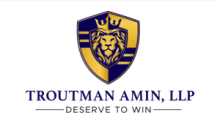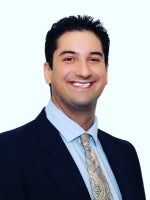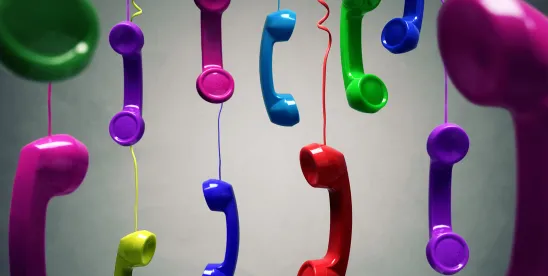Greetings TCPAWorld!
I’m back with the latest. Let’s talk about a name-dropper’s worst nightmare. The Southern District of Ohio has ruled a significant win for TCPA defendants in a recent decision emphasizing the importance of admissible evidence in telemarketing litigation. In Schwartz v. Bamz Enters., L.L.C., No. Case No: 1:23-cv-608, 2025 U.S. Dist. LEXIS 89794 (S.D. Ohio May 12, 2025), Magistrate Judge Stephanie K. Bowman recommended granting summary judgment to the defendant in a matter where callers falsely claimed to represent a legitimate business. Just saying you’re someone doesn’t make it so. This wasn’t just a procedural ruling…but a resounding endorsement of evidentiary standards that protect legitimate businesses from being dragged into litigation based solely on hearsay.
At TCPAWorld, we don’t just track trends, but we spotlight the rulings that matter. This is a significant case to add to the growing body of case law protecting companies from liability when scammers or unauthorized third parties appropriate their business names during telemarketing calls—and it’s precisely the kind of misdirected claim Troutman Amin is built to defeat!
So what’s the scoop? Plaintiff received six telemarketing calls between January and March 2023 from individuals claiming to represent “Living Well Screening.” The calls pitched various medical testing services, including cancer genetic testing and free COVID test kits through Medicare. Plaintiff, who had registered his number on the DNC list in May 2021, recorded these calls and filed suit against Bamz Enterprises, LLC (“Bamz”), which legitimately does business under the trade name “Living Well Screening.” At first glance, this appeared to be a straightforward TCPA violation. However, as the Court’s analysis reveals, appearances can be deceiving regarding caller identity. For instance, it’s like blaming the bank for a phishing scam just because the scammer said, ‘This is Wells Fargo.’ Caller ID might tell one story, but admissible evidence reveals the truth.
Judge Bowman zeroed in on the most critical element of any TCPA claim: proving who made the calls at issue. Here, the only evidence connecting Bamz to the calls was the callers’ own statements that they represented “Living Well Screening.” The Court’s analysis was unequivocal: “Those recorded statements are clearly hearsay, insofar as they are out-of-court statements offered for the truth of the matter asserted. Pursuant to Rule 56(c)(1)(B), a party is entitled to summary judgment if it can show that an adverse party cannot produce admissible evidence to support the fact. Id. at *6.
Let’s think about this for a moment. This reasoning aligns perfectly with Fed. R. Civ. P. 56, which requires admissible evidence to survive summary judgment. Hearsay statements from unidentified callers don’t meet this threshold. While the Plaintiff’s theory may appear convincing at first glance, it is crucial to recognize that courts must rely on credible evidence rather than anonymous assertions.
In contrast to Plaintiff’s inadmissible evidence, Bamz presented substantial sworn testimony that none of the six calls originated from Bamz facilities, Bamz has never owned or used an automatic telephone dialing system (“ATDS”), none of the named callers (Ron Williams, Marsha, David, Ann, and Maria) were ever employed by or affiliated with Bamz, and Bamz never authorized any third party to make telemarketing calls on its behalf. As such, Bamz clearly demonstrated that its business model focused solely on providing customer service for at-home medical testing kits—referred to as “kit chasing”—rather than selling these products through telemarketing.
In turn, Plaintiff attempted to salvage his case by pointing to Bamz’s marketing materials describing itself as a “call center” and referencing “sales” activities. See Schwartz, 2025 U.S. Dist. LEXIS 89794, at *11. However, the Court dismantled this argument by asserting: “Plaintiff’s evidence is even more tangential and speculative.” Id. Bamz’s unrebutted sworn testimony clarified that while it briefly considered expanding its call center operations into sales, that effort never materialized. See Schwartz, 2025 U.S. Dist. LEXIS 89794, at *12-13. The mere capability or aspiration to conduct telemarketing is not evidence that a company engaged in such activities.
Judge Bowman’s recommendation aligns with a growing trend across federal courts. In Lindenbaum v. Realgy, L.L.C., 606 F. Supp. 3d 732 (N.D. Ohio 2022), the Court granted summary judgment because the plaintiff could only offer hearsay statements from callers claiming to represent the defendant. Moverover, the Court in Worsham v. TSS Consulting Grp., L.L.C., No. Case No: 6:18-cv-1692-LHP, 2023 WL 5016558, at *2 (M.D. Fla. Aug. 7, 2023), was equally direct, holding that a plaintiff’s hearsay statement that callers claimed to work for the defendant was “simply insufficient” to overcome summary judgment.
Does this case ring any alarm bells? We see companies whose names have been misappropriated by unauthorized callers all the time. A successful defense strategy includes presenting sworn testimony from company officers denying authorization of the calls, providing comprehensive employee records showing none of the identified callers work for your company, documenting your business model and demonstrating how it differs from the activities described in the calls, and challenging the admissibility of the plaintiff’s evidence under the hearsay rule. As Judge Bowman notes, in today’s telemarketing environment, “unscrupulous telemarketers or scammers employ a variety of deceptive practices – including misrepresenting that they are affiliated with a government agency or a legitimate company or charity – in order to manipulate the person that they are calling.” Schwartz, 2025 U.S. Dist. LEXIS 89794, at *6.
The decision recognizes that the technological landscape has changed dramatically since the law’s enactment in 1991. Today, spoofing technology and international call centers make it easier than ever for unscrupulous operators to impersonate legitimate businesses. The Court acknowledged this evolving landscape, noting that legitimate telemarketers abide by TCPA rules. But illegitimate ones…do not. Id. at *5.
Perhaps most compelling was Plaintiff’s admission during deposition that he had no admissible evidence to refute [Bamz’s] claim that someone is using Living Well Screening without their permission, and that [Bamz] is not responsible for the six calls. See Schwartz, 2025 U.S. Dist. LEXIS 89794, at *7-8. This acknowledgment underscores the fundamental weakness in many similar TCPA claims in which the only evidence connecting a defendant to allegedly illegal calls is the caller’s unverified statement.
Here we have a significant victory for TCPA defense litigation. It recognizes that company names can be easily misappropriated by bad actors, and it places the evidentiary burden squarely on plaintiffs to prove caller identity through admissible evidence. Judge Bowman aptly concluded: “To deny summary judgment on the record presented would be to ignore the shifting burdens built into Rule 56 and allow a plaintiff to proceed to trial who lacks admissible evidence on the most critical element of his claim – here, the caller’s identity.” Id. at *9.
So here’s a critical takeaway for TCPAWorld: as litigation around spoofing and impersonation continues to rise, courts are signaling that if your only link is a voice on the line, it better come with more than a name drop. Courts are willing to protect legitimate businesses from liability for the unauthorized actions of third parties who appropriate their names or brand identities. In an era of spoofing and shadow dialing, proof beats presumption.
As always,
Keep it legal, keep it smart, and stay ahead of the game.
Talk soon!




 />i
/>i

